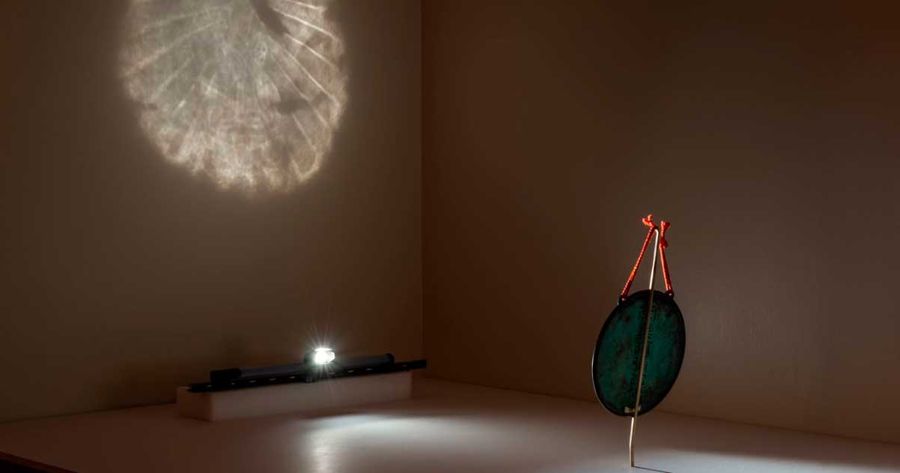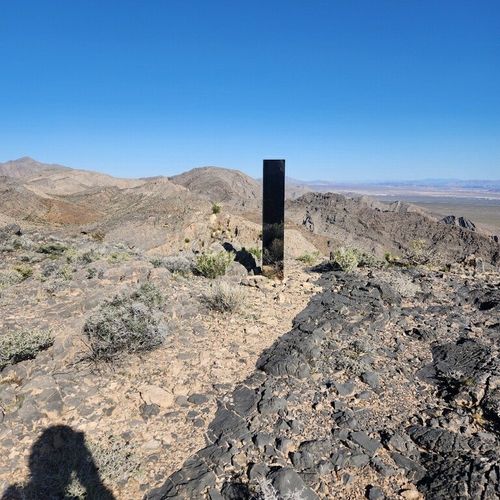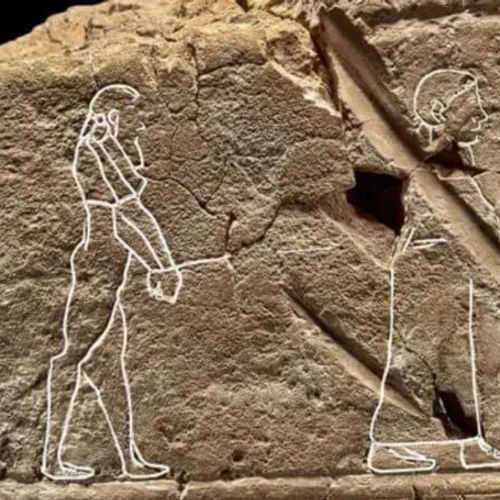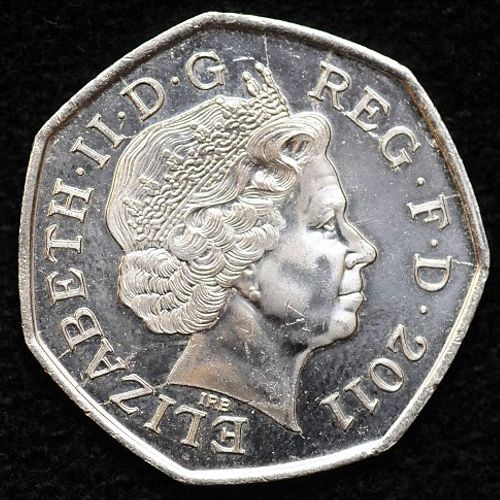
| Added | Mon, 18/07/2022 |
| Источники | |
| Дата публикации | Mon, 18/07/2022
|
| Версии |
Hidden in plain sight - in the repository of the East Asian art collection of the Cincinnati Art Museum, a seemingly unremarkable bronze mirror from China of the 15th and 16th centuries. Being part of a huge collection of hundreds of thousands of other artifacts, it turns out to be an extremely rare magic mirror, with an image of a Buddha shrouded in mystical rays.
Magic Mirrors: Japan and China
The Buddha is sitting in his typical meditative pose, and rays of light emanate from him. There are also six hieroglyphs on the reverse surface, which are a reference to Buddha Amitabha, an important figure of East Asian Buddhism.
The last time the magic mirror was exhibited was in 2017, and before that it had been stored on a shelf in the utility room for decades. The magic mirror is an ancient form of Chinese art dating back to the Han Dynasty (202 BC - 220 AD). These are transparent or light-transmitting mirrors, and, according to the museum's statement, "... when light is projected on them, the mirrors appear transparent and show hieroglyphs or a decorative pattern."
The curator of the Museum of East Asian Art, Dr. Hou-mei Sung, is responsible for the fact that this beautiful historical artifact was born. She saw an extraordinary resemblance to the mirrors of the Japanese Edo period, although they were smaller than those kept in museums in Tokyo, Shanghai and New York, and had a more complex style of Chinese writing.
This prompted her to visit the museum's vault last spring and look at the mirror, which has been part of the museum's collection for more than 50 years. For the examination, she was accompanied by a conservation expert. "I asked her to shine a strong, directional light on the mirror," says Dr. Sung.
"She used her mobile phone (flashlight) and it worked."
Later, the mirror was taken to conduct experiments using powerful and focused light, which was supposed to reveal the image of the Buddha.
According to Dr. Sung, the Cincinnati Art Museum is among a small number of institutions in the world that have this type of magic mirror. Only two other institutions own rare Buddhist mirrors, including the Metropolitan Museum of Art in New York and the Tokyo National Museum. However, both of them belong to the Japanese Edo period and may not be as ancient as the recently discovered Chinese counterpart.
"This is a national treasure of China, and we are very lucky that we have rediscovered this rare artifact and exhibited it in Cincinnati," Sung said. "I know that scholars studying Asian art will come to Cincinnati to see it, and I am glad that they will be able to learn more about our collection being here," she said. She hopes that this find "will inspire visitors to learn more about the many rare works of Asian art in our collection."
The art of making reflective mirrors
The art of making reflective bronze is not limited to China, although it is one of the first cultures to bring it to perfection. They have been found from ancient Egypt to the Indus Valley. Japan also later developed and perfected this technique during the Edo period (1603-1868).
The mysterious reflective technique was created by applying images, words and patterns to one side. Then the flat surface on the other side was scratched and scraped, and then polished to make an "ordinary" mirror.
"However, when the mirror is under bright sunlight, its reflective surface can be "seen through", which makes it possible to see written symbols or patterns on the reverse side in the reflection on a dark wall. In some mysterious way, solid bronze becomes transparent, which led to the Chinese name of these objects - "light-reflecting mirrors"," the UNESCO article says.
When sunlight hits a reflective surface in a certain way, the hidden image usually matches the pattern on the reverse side. This created the optical illusion that the light was passing directly through the mirror.
In the case of the current find, a second metal plate was added on the reverse side, which made it possible to hide the original Buddha inside. In general, the mirror has a diameter of 22 cm and was probably used as a religious decoration in a temple or an elite house.
"No matter how much you can explain theoretically, it all depends on the master who polishes the surface, which is extremely difficult. That's why they are so rare," explains Dr. Sung, admitting that experts still do not understand how the metal was processed by artisans.
She believes that many museums have such mirrors hidden somewhere in the storerooms of museums, which opens up the possibility for a lot of historical research on this topic.
Новости со схожими версиями
Log in or register to post comments














